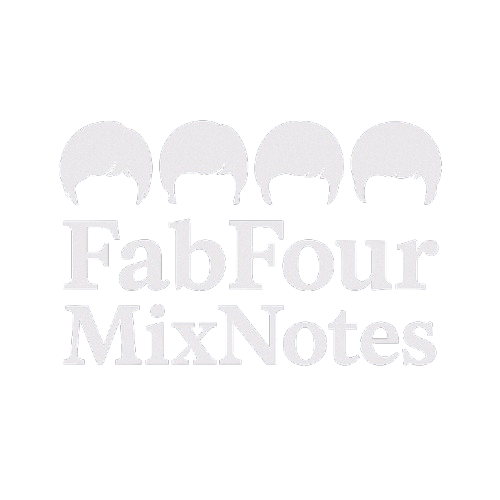Tracing every valve, switch, and fader of the REDD.37 valve console that shaped the Beatles’ early-’60s sound.
The REDD.37
Only three REDD .37 desks left EMI’s Record Engineering Development Department in 1958. Built for Blumlein “Stereosonic” experiments, this studio desk became the heart of Please Please Me-era Beatles sessions.
Note: We wrote about the REDD.37 in our Mix Note: Working Within Constraints: Recording The Beatles on September 11, 1962.

Top-Level Architecture
- Mic/Line Section – eight channels, each with A/B mic switch, Bass-Lift / Flat / 10 dB Pad selector, constant-Z trim, and a Siemens V72 (or V72S) valve preamp.
- Tone Cards – passive plug-ins after the V72: fixed Classic on early desks; later models accept interchangeable Classic or Pop cards for ±10 dB shelving EQ.
- Faders & Panning – Painton 31-step faders (step count from workshop data; EMI manual lists them simply as “Mic./Main Faders”). Channels 3-6 carry 5-step Pan Pots; 1-2 & 7-8 use Spreaders for M/S widening.
- Bus Section – four Main Combiners feed Inter-Amps I–IV, then Line-Amps I–IV, then the 4-track tape deck.
- “Stereosonic” Chain – optional Sum-&-Difference amps, Spreaders, and a built-in Shuffler matrix for width control.
Channel-by-Channel Path
| Stage | Hardware | What it Does | Session Tips |
|---|---|---|---|
| Mic Selector | Bass-Lift / Flat / Pad rotary | +10 dB LF for distant ribbons, –10 dB pad for close mics | Leave in Pad for close drums to keep V72 headroom. |
| Constant-Z Trim | 4-step ladder | Fine level without changing impedance | Emulate with a –6 / –12 dB clip-gain step. |
| Valve Preamp | V72 / V72S (+34 dB) | Adds 2nd-order harmonics | Drive a V76 or VPRE-72 plugin until 1-2 dB GR. |
| Tone Card | Classic vs Pop | Pop card is measurably brighter (~4–5 kHz shelf) while the manual lists only the ±10 dB range. | |
| Painton Fader | 31-step ladder | Program gain; no pan on 1-2 / 7-8 | Ride these in real time for bounce-downs. |
| Pan / Spreader | 5-pos pan (3-6) or Spreader (1-2, 7-8) | Places or widens signal | Explains hard-panned early stereo. |
| Bus Assign | 4 sub-groups | Route to tape or echo | Sub-group 4 often fed RS124 compression. |
| Shuffler Matrix | L/R ↔ M/S conversion | Width enhancement | Mimic with an M/S width plugin at 1.1–1.2. |
| Line Amp | V72 chain | Final gain to deck | Peak around –6 VU to saturate tape. |
Signal Flow
(generic channel strip, 1962 configuration)
Microphone
↓ (Bass-Lift / Flat / –10 dB Pad selector) ← M.1-8 switch bank
Constant-Z Trim (4-step attenuator)
↓
Siemens **V72** / **V72S** valve pre-amp (+ ~34 dB)
↓
Passive Tone Card – *Classic* **or** plug-in *Pop* (±10 dB shelves)
↓
Painton 31-step Mic Fader
↓
┌─────────────────────── channel-dependent ────────────────────────┐
│ • **Pan-Pot** (5-step) — Mic 3-6 │
│ • **Spreader** (-12…+4 dB) — Mic 1-2 & 7-8 │
└──────────────────────────────────────────────────────────────────┘
↓
Main Combiner I–IV → (optional) **Sum-&-Difference** → **Shuffler** (M/S width)
↓
Inter-Amp I–IV
↓
Main Fader I–IV (program level trim)
↓
Line-Amp I–IV → BTR-2 Tape MachineSources
Abbey Road REDD.37 Desk: Gear that Made Us
Phædrus and the FABs….. The Beatles Recording Gear
REDD.M37 Reference Manual (Archive.org)
Vintage King: Meet The Beatles Console: The EMI/Abbey Road Studios REDD.37
